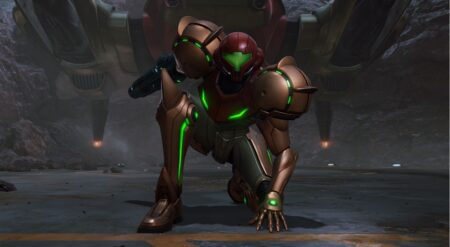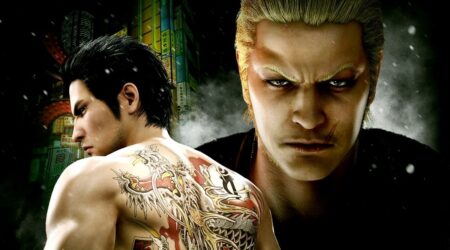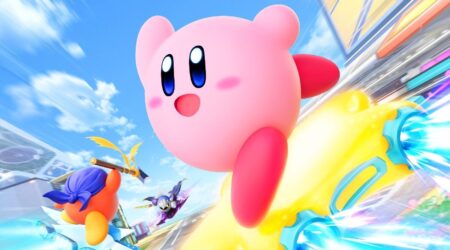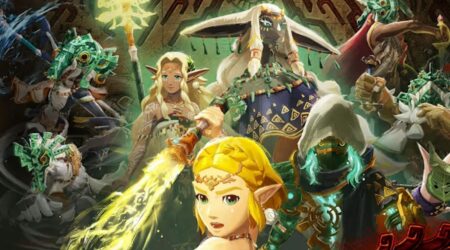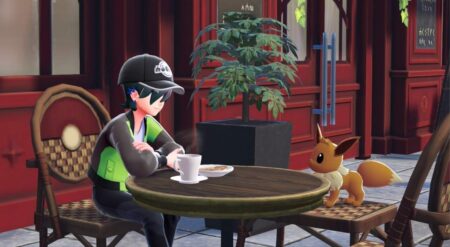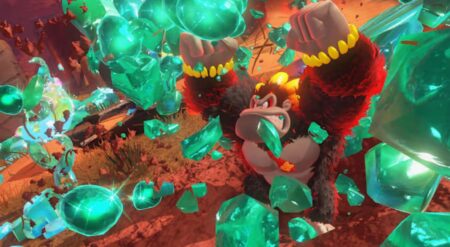Square Enix’s original 3DS turn-based RPG, Bravely Default, has been given new life as a launch title for the Switch 2. The series is a beloved franchise whose soul has spawned modern favorite RPGs such as Octopath Traveler. And now, it’s back and better than ever as Bravely Default Flying Fairy HD Remaster.
While remasters could be seen as a negative in the context of a new console’s launch line-up, evolving a game like this one from the 3DS era to feel modern again is massively impressive. Yet, even though it’s still a blast to play with some significant quality-of-life updates, it’s surprisingly intense on the Switch 2’s battery.
On its surface, Bravely Default‘s story feels quite generic. One day, a great chasm opens in the world of Luxendarc. Tiz is the lone survivor of this catastrophe and is rescued by a nearby kingdom for recovery. At this same time, Agnes, the Vestal, or champion of Wind, finds herself in danger and on the run from an empire wanting to stop all the Vestals before they complete their missions.
Quickly, they gain fellow allies: Edea, a girl hiding a dark secret about the empire, and Ringabel, the amnesiac. This group of four must save the crystals and Luxendarc from the empire’s reign and the ever-looming darkness encroaching on the world.
What makes the story of Bravely Default fun in its own way is how, for the most part, the party is a group of relatively normal people. They all stand out from the crowd; each has their own unique background. Yet, they persevere because they don’t give up. They all get stronger because they conquer challenges by training hard together.
In Bravely Default, the combat strategy plans for recovery.

How the game has evolved from a basic RPG story to something full of important messages is impressive. Each lead has their growth and are never left to the wayside for others stories. While Tiz isn’t as much of a stand-out yet, his care for Agnes and putting himself in the way of danger to save her is admirable. Edea slowly reveals herself as being more than she seems while proving herself to be a valuable ally.
Edea is quickly revealed as being a turncoat of the same faction hunting Agnes. And as she is confronted time and again by her former allies and friends, it’s Edea’s steadfastness to call out what wrongs her people have committed. Edea specifically is an excellent message about growing out of the beliefs you were raised with, which is coupled by every reveal about her past. Ringabel is the most mysterious of the bunch, but he’s a fun enigma that continues to prove time and again why his memory loss doesn’t hinder him.
That growth ties nicely into the gameplay. While it’s quite similar to other classic turn-based games, Bravely Default pushes you to break out of comfort roles and strategize more than one turn at a time. The key to combat is through the Brave and Default mechanics. Brave lets you perform an extra action, while Default is like defending and gives you an additional action point to use in a later turn. As long as your action points are zero or above, you can set an action during your party’s turn.

This evolves the game’s strategy to plan for recovery, prepare for large-scale attacks, or commit to dealing a significant amount of damage with multiple moves at once, among other options. The enemies can do the same, too. Combat almost becomes a song and dance of moves and counter-moves to come out on top. Emphasized by some actions changing the battle music.
Each weapon type has a special action that recharges by performing specific tasks, such as the staff allowing you to cast “Regenerate” after healing allies. Each one of these special actions has a unique song that plays, along with healing/buffs to the party and damage/debuffs to the enemies. Along with planning for how to Brave or Default, knowing when to execute these is key to conquering the harder bosses, even early on.
And then there’s the different jobs. Bravely Default is peak job implementation for a Square Enix game that feels like an evolution from Final Fantasy 3. There are over twenty jobs to unlock, each with specific abilities, passive traits, stat changes, and weapon proficiencies to keep in mind. Each job has to be leveled by each character for them to get the most out of what they have to offer. Many have to be unlocked by completing specific side content, beating a boss who uses that particular job “asterisk” to unlock.
Program auto-combat to capitalize on enemy weaknesses.

The jobs alone aren’t what makes Bravely Default‘s strategy so engaging. It’s the aforementioned passive traits and secondary job classes. After leveling up a job enough times with a specific character, they unlock passive traits that can be equipped while using a different job.
Sometimes, these passive traits are almost necessary for bosses and dungeons, even early on in the game. It’s like an anti-poison for a boss that poisons you regularly. Or speed increase to ensure your healer goes first to heal up the party after a big attack.
To truly maximize this, grinding is essential. Thankfully, the game’s speed can be sped up in combat, and auto-combat can be programmed to capitalize on enemy weaknesses. The game makes itself work to almost run in the background so you can tune out, read a book, or just move the joystick around while working. Let the game run and grind while you’re not required to, with minimal input. Just be sure to check in and heal.
But what makes this remaster worth being a remaster in this day and age? Besides its wonderful hand-drawn art style looking even better on the Switch 2, it’s the fact that some mechanics from the original 3DS release have been reworked to function again. Several key parts of the game are tied to Tiz’s destroyed home and summoning allies during combat. These were all previously tied to the 3DS’s StreetPass feature, one that required you to carry your 3DS around and bring it near other 3DSs.
The more you find, the more friends you call on in combat to perform an action they set in their own game. Or, to become a townsperson, you can be assigned to rebuild different shops and buildings in your town. Now, it’s all done through being connected to the internet and can be achieved naturally by exploring various cities. Flowery ghost sprites will appear now and then. Running into them is just like the Street Pass of yore.
Any time the Switch 2 goes idle, prepare for a randomized effect.

However, this function also presents a problem in the game’s current state. Any time the Switch 2 goes idle, the game considers you to be disconnected from the internet, even if the console has never gotten disconnected. Thankfully, even if the game thinks you’re disconnected, it does provide internet-specific boons like AI “friends” to call on in combat. However, this does introduce a more randomized aspect to the social feature.
It’s all luck to get a useful AI character. The ability assigned to this AI character, what job they are, what move they perform, and their power level are all random. Comparatively, the online version lets you choose exactly what move you perform for those who call on you.
Regardless, the town building and friend functions are a good quality-of-life upgrade that makes them both usable even if you don’t get out much compared to before. Plus, there are difficulty options, and dungeons tell you the recommended level you should be to get through it, a new “Heal All” button in the menu, as well as saving loadouts. To top it all off, the visuals have been translated well from an 800 x 240 screen to 1080p. You’d be hard-pressed to tell that this was originally a 3DS game.
Two new minigames were also added for a little bit of extra enjoyment. Both use the Switch 2’s new mouse feature. The Rhythm Catcher is a rhythm game that unlocks different songs by progressing through the main game. And then the real standout, Ringabel’s Panic Cruise, is a ship-flying game in which, while steering the ship through rings, you need to perform actions for more points and fight a boss in the end. I’d enjoy a full $10 spin-off of this minigame if Square needed more ideas.
The minigames in Bravely Default provide welcomed breaks.

Both are nice little breaks from the main game if you want to just take a break from grinding. They are also how you want to unlock different encounter rates beyond the base 50, 100, 150, and 200% rates. But they’re not necessary to beat the game, thankfully. It is just to add more quality to the grind and gain new lore tidbits after reaching certain score milestones in the minigames.
However, be warned about the overall package if you prefer to play your Switch games in handheld mode. A 13-year-old game, while upgraded, eats through the Switch 2’s battery. And it’s not because of the current battery glitch, either. I clocked my Switch’s battery life from 100% to forced rest mode at about three hours.
It’s not horrible, but that’s definitely on the lower end of the 2-6 hour battery range. Older games like this one just feel more natural in handheld mode. So, having to take breaks to charge the Switch 2 or sit by a charger is annoying, particularly when higher-quality chargers to meet the Switch 2’s power demand aren’t as prevalent in my house… yet.
Bravely Default Flying Fairy HD Remaster is an excellent RPG launch title that has now been given a second life through the Switch 2. This time, features have been remade to fit into this street pass-less world, such as town rebuilding and friend recruitment. And even its art style feels updated enough not to show its age after 13 years and jumping from 3DS to the massively more powerful Switch 2.
Yet speaking of power, it’s shocking how quickly this game drains the console’s battery in handheld mode, lasting only three hours from 100% to forced rest mode. Maybe with some refinements and fixes, this Phoenix Down’d game will be remembered again as one of the greats. It’s already become my most-played game with the Switch 2, and there’s no plan to stop playing anytime soon.
Bravely Default: Flying Fairy HD Remaster is available now on Nintendo Switch.
Bravely Default Flying Fairy HD Remaster
-
Rating - 8.5/108.5/10
TL;DR
Bravely Default Flying Fairy HD Remaster is an excellent RPG launch title that has now been given a second life through the Switch 2. Maybe with some refinements and fixes, this Phoenix Down’d game will be remembered again as one of the greats.



